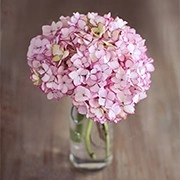Chinese Tea Tools

China is where tea all began. For thousands of years, tea has been more than just a drink—it's part of our daily life and a big piece of Chinese culture. Tea isn't just about taste.
It contains profound connotations. And when it comes to enjoying tea, tea sets are essential. They help us prepare the tea properly and make the whole experience more elegant and enjoyable.
PURE™ Ceremony Tea Set - Best Tea Ceremony Set
Video by VIVA
What is a tea set?
In the old days, we called them “tea tools.” These include everything we need to pick, make, and drink tea. A tea expert named Lu Yu even listed 28 types of tea tools in his famous book The Classic of Tea. Over time, tea styles changed, and so did our tools. Now we have all kinds of designs and materials, each with its own use. A good tea set helps bring out the best taste and smell in every brew, and it also looks beautiful while doing so.
Let's take a closer look at the main tools we use to brew and enjoy tea.
Teapot
The teapot is the heart of the tea set. We use it to hold the tea leaves and hot water while brewing the tea. Teapots come in many shapes and styles. A good one keeps heat well and helps bring out the full flavor of the tea. Some are even considered works of art! A well-made teapot makes the whole tea-drinking experience more special.
Gaiwan (Lidded Bowl)
The gaiwan has three parts: a lid, a bowl, and a saucer. In Chinese philosophy, the lid stands for the sky, the bowl for people, and the saucer for the earth.
This tool is super handy—it can be used for both brewing and drinking tea. Its wide opening makes it easy to pour water and smell the tea. The shape helps the leaves settle, and the lid helps filter them out. Gaiwans have been used since the Tang dynasty and were popular with both royalty and everyday folks. Today, they're still one of the most common tea tools.
Fairness Cup (Gongdao Bei)
Ever noticed that middle cup at a tea session? That's the fairness cup. We use it to hold the brewed tea before pouring it into individual cups. This way, the flavor stays just right—not too strong or bitter.
It also helps us pour equal amounts for everyone, so each guest gets tea that tastes the same. That's why it's especially useful when judging or tasting tea. And since it has no lid, it's easy to see how much tea is inside while pouring.
Tea Cups
Once the tea is ready, we drink it from tea cups. These come in all shapes and sizes. There are tasting cups and aroma cups, and some larger cups can even be used to brew tea too.
Most tea cups are made of porcelain or clay to handle hot tea. The inside is usually white to clearly show the tea's color, while the outside often matches the teapot. A coaster is often used with the cup—it looks nice and protects the table.
Aroma Cup
This is a taller cup used before drinking. After pouring tea into the tasting cup, we smell the leftover scent from the aroma cup. It helps us enjoy the fragrance before tasting.
Tea Holder (Cha He)
The tea holder is used to hold the dry tea leaves before brewing. It's shaped like a leaf and lets us measure the right amount. We can also use it to enjoy how the leaves look and smell before adding them to the pot.
Tea Scoop (Cha Ze)
The tea scoop is often used together with the tea holder. It's usually made of bamboo and helps us take tea leaves from the tea can to the holder or teapot. It's more elegant than using our hands—and keeps the tea clean and dry.
Tea Tray
The tea tray is where we place all our tools. It helps catch spilled water and used tea. Tea trays come in wood, stone, bamboo, porcelain—some are even made from jade! Many are beautifully designed and make our tea time feel more graceful.
Water Bowl
The water bowl is used to hold waste water from rinsing or cleaning during tea prep. It's another tool that helps keep everything tidy while we enjoy our tea.

Let's enjoy tea together
Learning about tea tools helps us understand just how rich Chinese tea culture really is. Each tool has a purpose, and each one adds to the beauty of the tea experience. So next time we brew a cup, let's take a moment to appreciate not just the tea—but the art and care behind it.
Lykkers, do you already use some of these tools at home? Or are you inspired to start your own little tea corner? Let's chat!

 · Lifestyle Team
· Lifestyle Team